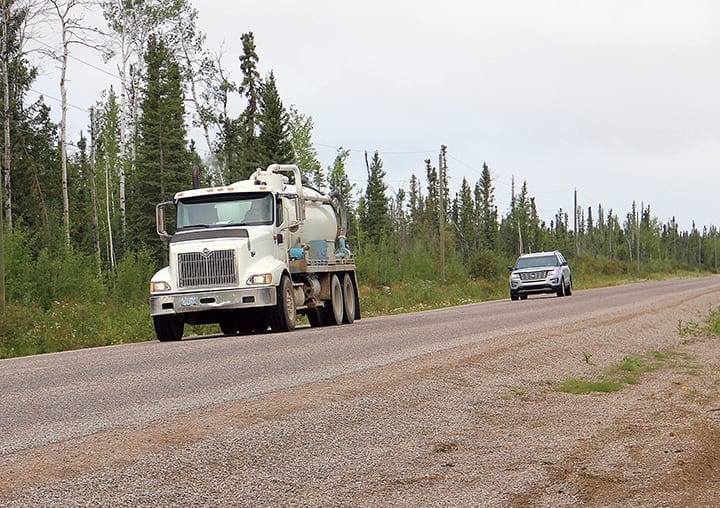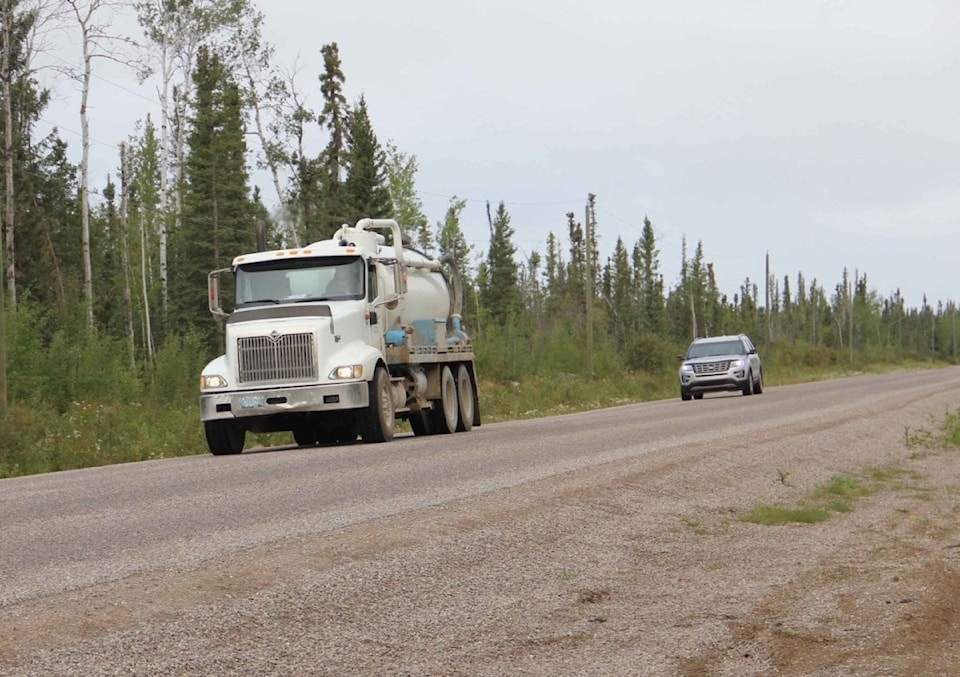A project to upgrade the foundation and put new chipseal on the access road to the Hay River Reserve is almost complete.

Paul Bickford/NNSL photo
"Construction is finished and line-painting is still being done," said Binay Yadav, the director of the transportation division with the Department of Infrastructure.
The chipsealing of the 11.5-km route to the reserve's New Village began in the second week of July and wrapped up on July 31.
The access road to the reserve was first chipsealed in 2011, but sections of the surface began to deteriorate not long afterwards.
Yadav said there has been an issue with water management on the Hay River Reserve road because the drainage system was not so good.
"So that's how we ended up installing some culverts and some more ditching work so that we can improve it," he said.
That will hopefully help the new chipseal last longer.
"Generally, once we improve this drainage work, it will elongate the life of a whole road," said Yadav, noting that chipseal can have a life of three to seven years.
The new chipseal was also overlaid on the chipseal from eight years ago.
"So it gives you longer life," said Yadav.
The foundation work – involving ditching and culvert installation – began last winter and was wrapped up in May by Rowe's Construction.
The chipsealing and repairs to some softer spots on about four kilometres of the road were done by North Country Maintenance of British Columbia.
Yadav noted a third contractor will do the line painting, which is expected to take place in September.
All the work – the ditching, culverts, chipsealing and line-painting – is costing the GNWT about $1.4 million.
Chief April Martel of K'atlodeeche First Nation is very happy to see the road chipsealed once again.
"It's good for our vehicles," she said, noting there was a lot of wear and tear on vehicles because the road was so damaged. "There were a lot of potholes and flying rocks and stuff like that."
Martel plans to ask the Department of Infrastructure about the speed limit, noting it had been lowered to 60 kph from 80 kph because of the deteriorated state of the road.
"I believe it's still 60 because everyone is still going 60, but people are going a little faster than 60 because they think the road is done," she said. "I haven't got a confirmation yet as to when they're going to change the speed limit or if they're going to keep it at 60."
Martel is hoping that the new chipseal lasts longer than the previous chipseal.
"Time will tell, though," she said. "We're not sure, but we're hoping it will last a little longer than the last road."
She is pleased with the new ditching and culverts, and the fact the road has been built up a little higher.
"So that's really good," she added, noting the water will now flow into the ditches rather than staying on top of the road.
Martel is also pleased there seems to be more people coming to the reserve and that the chipsealed road will be ready to welcome visitors for a major handgames tournament set from Aug. 31 to Sept. 2
"That road is not going to be dusty, anymore," said the chief, noting it was very bad last summer. "There was so much dust."
